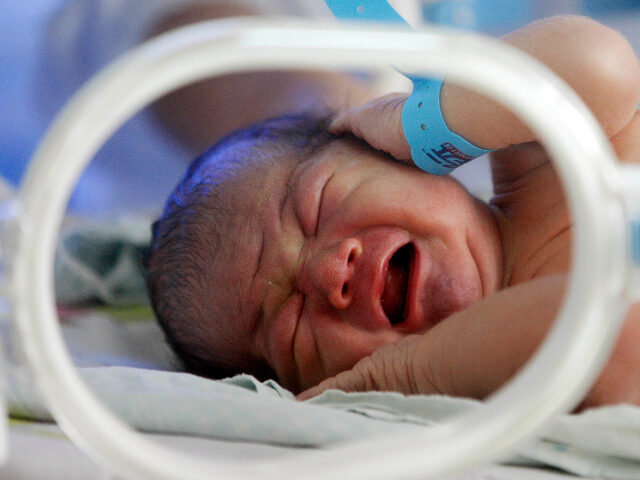China’s state-run National Business Daily reported Tuesday the nationwide fertility rate dropped to 1.09, a shockingly low number that would give China the lowest fertility rate among any nation with a population of 100 million or more.
The latest data from the China Population and Development Research Center was considerably worse than projected and a substantial drop from the fertility rate of 1.2, reported in 2021, which was already a record low.
Reuters noted the Hong Kong Family Planning Association separately released a report on Tuesday that said the number of childless women in the relatively fertile island city has more than doubled over the past five years, leaving 43.2 percent of Hong Kong’s women without children.
Qiao Jie, dean of the Health Science Center at Peking University, warned last week that births in China could fall below eight million in 2023. Births fell below ten million for the first time in 2022.
Qiao said births nationwide declined by 40 percent over the past five years, which tracks closely with the Hong Kong Family Planning Association report released on Tuesday.
China already knew it had a severe demographic crisis on its hands, as the hangover from its hideous One Child Policy of population control through forced abortions combined with the falling birthrates that afflict most prosperous industrial societies created a perfect storm of population decline.
Population decline is a severe problem for countries with aging populations, as fewer young workers are available to pay the immense cost of retirement benefits and health care for the elderly.
In January 2023, the Chinese government admitted to its first net population decline since Mao Zedong’s Great Leap Forward in the 1960s, which reduced the Chinese population by murdering a great deal of it. The United Nations predicted in April that India would surpass China as the world’s most populous nation this year.
China’s decline threatens to derail its entire industrial agenda, especially since Chinese young people are shunning factory jobs, and the sputtering post-pandemic economy is having a hard time finding any other work for them. Youth unemployment is so high that the Chinese Communist Party announced on Tuesday it would no longer publish the dismaying numbers.
The alarming new fertility numbers are a major embarrassment for the Chinese Communist Party, which has responded to every previous warning of population decline with confident assurances that “high-quality” Party policies would fix the problem.
The One Child Policy formally ended in 2015, raising the limit to two children per family and then three children in May 2021. This may have been a critical blunder, as healthy population growth requires a substantial number of families to have three or more children as a matter of simple mathematics.
When raising the limit to three children per couple did not work, the increasingly desperate Chinese government went from offering more childcare subsidies to ordering families to have more children to shaming the childless with accusations of “pedophobia.” None of it worked, and now China has the worst demographic crisis among developed nations.
Some factors in China’s population crisis are common among industrialized nations, none of which has come up with a reliable way to shore up birth rates once educated, ambitious young people start deciding to put off marriage and family in order to focus on their careers and lifestyles. Other factors are unique to China, such as the “spillover effect” from the One Child Policy.
The Economist in June cited some interesting research that explained why the hangover from the One Child Policy lasted so much longer than Chinese planners anticipated:
Spillover effects may work in two ways. First, couples who have fewer children have more resources to invest per child. Other couples may feel compelled to emulate them if they want to compete, especially in areas such as education. A second way is through social conformity. As some couples have fewer children, this may influence others to limit the number of children they have, too. The authors found that minorities culturally closer to the Han were affected more by [family planning policies].
There could be lessons in China’s travails for other countries dealing with demographic collapse. For example, the research discussed by the Economist found a similar “spillover” problem in South Korea, caused by wealthy families spending more per child as the number of children declined. Less affluent families struggled to emulate these spending patterns, giving themselves a huge financial disincentive to have more kids – but when wealthy families made a deliberate choice to spend less on private education, lower-income families immediately followed suit, and birth rates perked up.
In China, and in most other demographically troubled countries, the first response to declining birth rates was to offer more subsidies for child care. A far better answer might be reducing the cost of child-rearing instead of subsidizing exorbitant costs, but no socialist government in either the Eastern or Western worlds thinks that way.

COMMENTS
Please let us know if you're having issues with commenting.